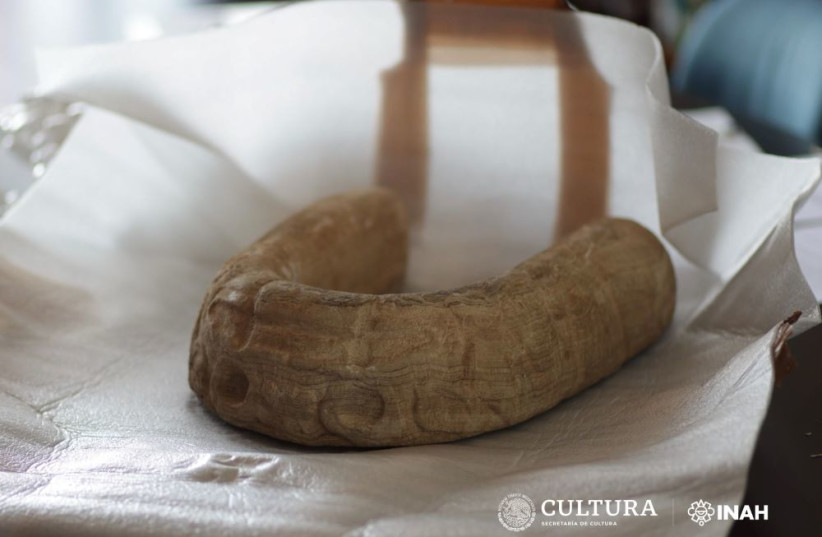A stone yoke, that was once used by ancient Mesoamerican ball game players, was returned to Mexico after outrage was expressed by officials, according to a statement from Mexico’s National Institute of Anthropology and History Ministry (INAH) on June 27.
The ancient Yoke had been discovered in an Austrian auction house and was listed for sale until the Ministry of Culture of the Government of Mexico, INAH and Mexico’s embassy to Austria intervened. INAH added that Mexico’s legislation strictly regulates any and all assets that form the country’s patrimony and prohibits the export of archaeological pieces.
Under federal law on monuments, archaeological, artistic and historical zones, items of significant cultural worth must be returned to the country of origin, according to INAH.
Why is the yoke considered to be culturally valuable?
It is considered to be of high cultural worth because of its excellent level of preservation and its “zoomorphic” representation, explain INAH. Zoomorphic is defined as having or representing animal forms or gods of animal form, according to Oxford dictionary.

The Yoke, made of sedimentary stone, was carved during the Mesoamerican Classic period somewhere between 400-900 CE, according to The Art Newspaper.
What is a yoke?
The yoke is an ancient hip protector that would have been worn by players partaking in ballgame rituals, explained INAH.
The yoke was carved in the classic Veracruz Central Classic style.
As The Jerusalem Post reported in April, this is not the first time that an ancient sport object from this period was found in Mexico. A stone scoreboard was discovered, measuring just over 32 centimeters (12.6 inches) in diameter and weighing 40 kilos (88 lb), displays hieroglyphic writing surrounding two players standing next to a ball.
